
I’ve been trying to learn bumblebee identification. Fairly
certain this is a male White-tailed Bumblebee (Bombus lucorum) since
the male of the species has a broader yellow collar then the queens
and workers and the yellow facial hair is a key indicator.
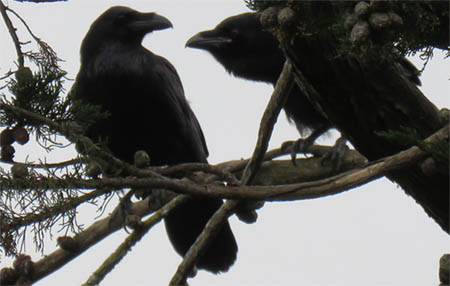
The local ravens successfully fledged three chicks in
spring. Here a adult bird is on the left with a fledgling. You can
see just see the pink spot on the corner of the young bird’s
bill, this seems to act as a incentive to get the parent to feed them
and it’s the only stage in their lives when they won’t
be totally jet black.
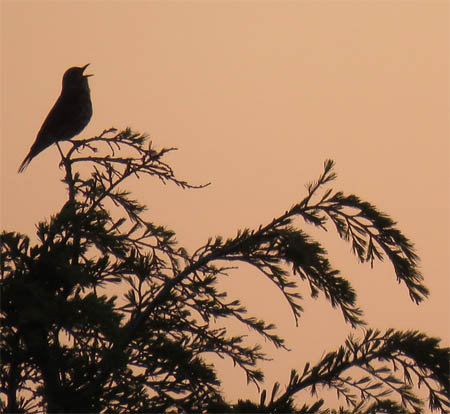
I’d got up early to see the sunrise but this Song
Thrush was up before me greeting the dawn from the top of a cedar
tree. Song Thrushes are one of the first birds to sing at dawn and
often the last bird singing at dusk.

A most unlikely unexpected sighting on a very quiet part of
Killiney Hill was this bird, a female mallard, not something you’d
expect to find on a granite hilltop.
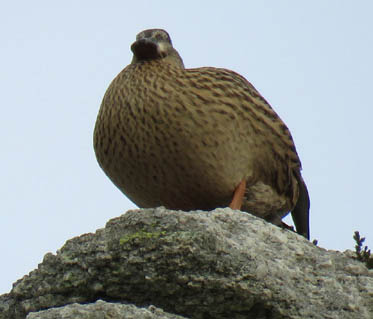
Enlarged
view
of the Mallard
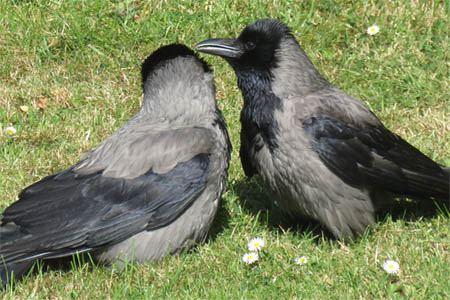
This
Hooded Crow spent ages gently preening it’s mate on the back
lawn
on a sunny afternoon. |
|
 This
Holly Blue butterfly was systematically making it’s way around
a holly tree in the garden and may well have been egg laying. In spring
they lay a single egg at the base of unopened holly flower buds and
subsequently the butterflies that emerge will lay their eggs on ivy
to overwinter. This
Holly Blue butterfly was systematically making it’s way around
a holly tree in the garden and may well have been egg laying. In spring
they lay a single egg at the base of unopened holly flower buds and
subsequently the butterflies that emerge will lay their eggs on ivy
to overwinter.

This nest of hundreds of tiny spiders was wreathed in
silk keeping them safe from the rain.
Photo by Lucy Desierdo

We
often have big flocks of starlings descend on the area in late spring.
Not a bird we normally get in the vicinity, at this time of the year
these flocks contains dozens of juveniles. Thankfully they don’t
go on to my feeders as I couldn’t afford to feed any more birds.
Anyhow this adult starling seems happy enough with the earwig it’s
caught.
Bee
Gone. When the gorse in Dalkey Quarry was in full bloom it attracted
lots of honey bees. This one above is flying away with it’s
pollen sacs clearly visible.
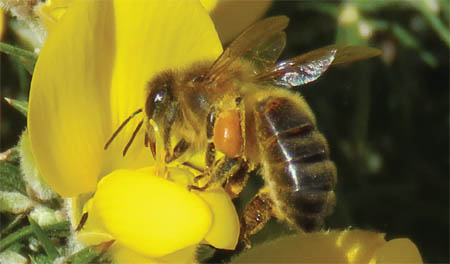
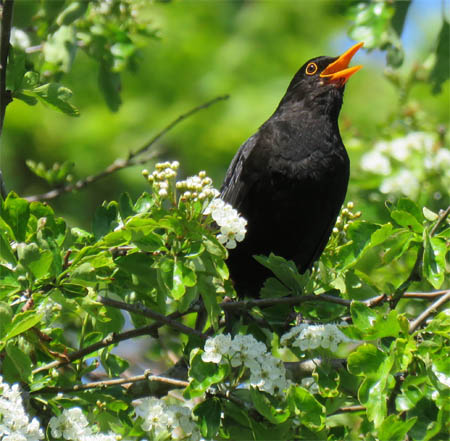
Sadly
by midsummer most of the blackbirds will have stopped singing. You’ll
still get the occasional male singing in July, especially if the weather
has been good and they’re still nesting but generally it’ll
be next February or March before we’ll hear their beautiful
song again.
|









 This
Holly Blue butterfly was systematically making it’s way around
a holly tree in the garden and may well have been egg laying. In spring
they lay a single egg at the base of unopened holly flower buds and
subsequently the butterflies that emerge will lay their eggs on ivy
to overwinter.
This
Holly Blue butterfly was systematically making it’s way around
a holly tree in the garden and may well have been egg laying. In spring
they lay a single egg at the base of unopened holly flower buds and
subsequently the butterflies that emerge will lay their eggs on ivy
to overwinter.


